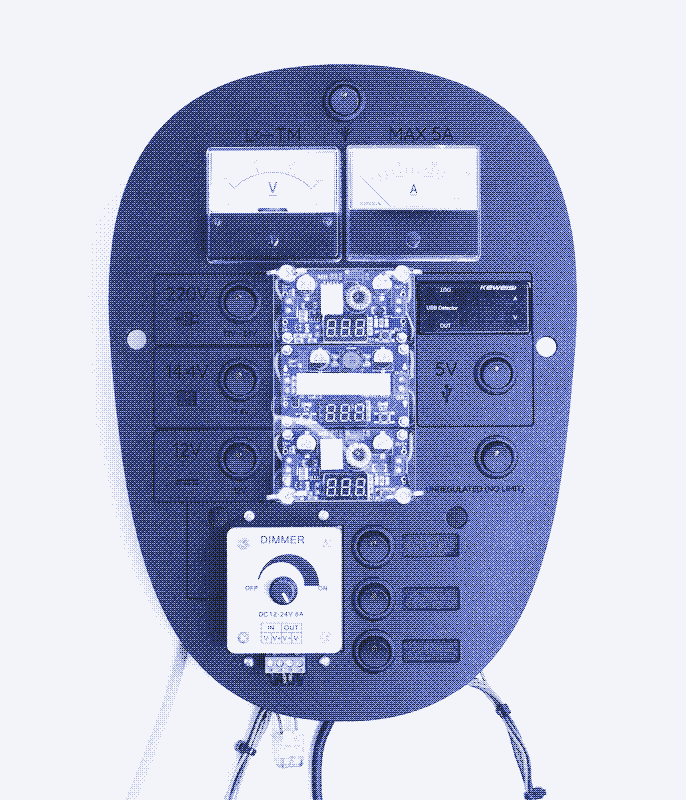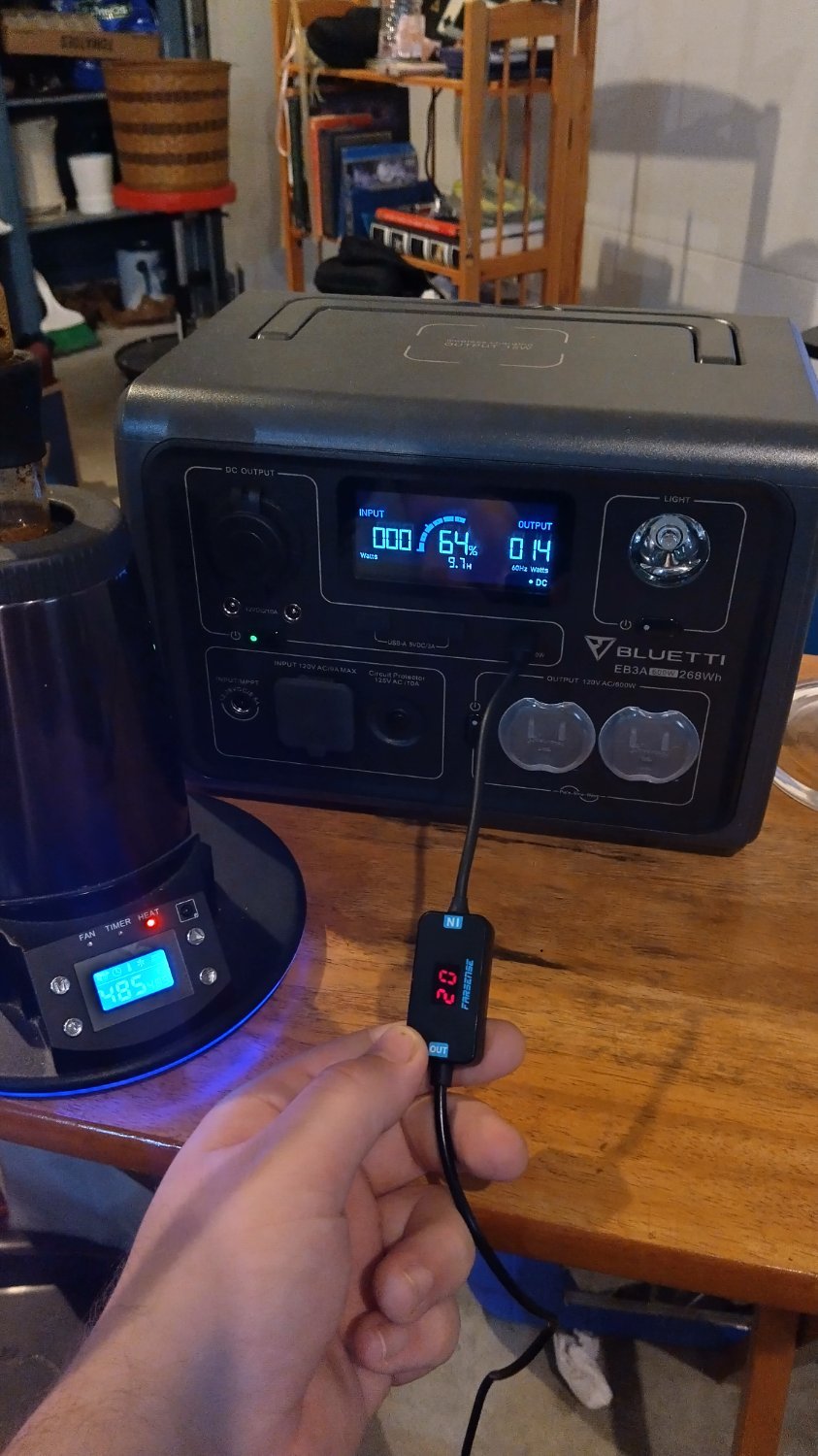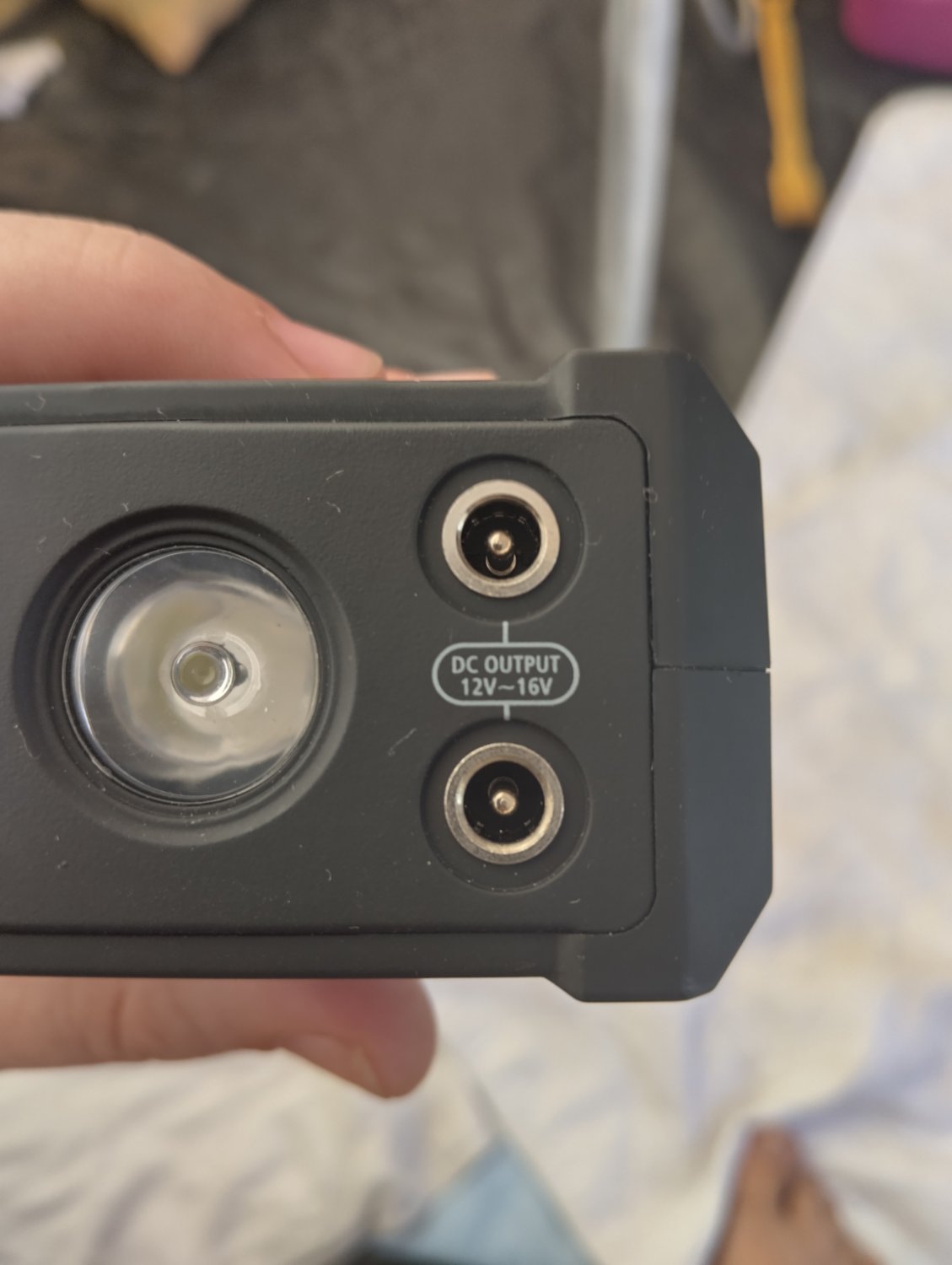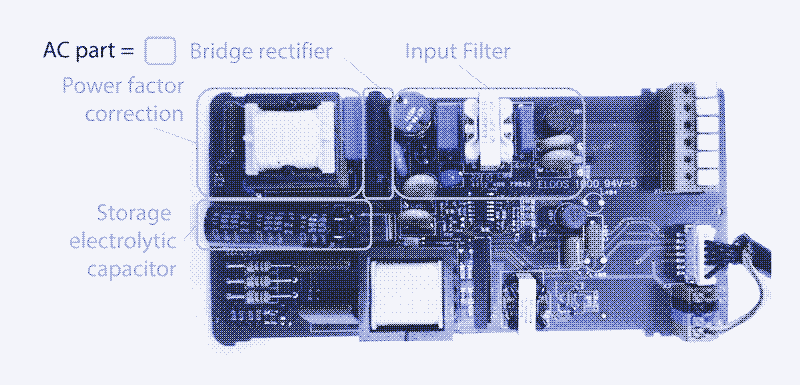A big one. No more brittle micro usb, which would eventually become loose and start falling out when charging. Being able to charge my laptop using my phone charger is also good.
I like its reversibility and faster speeds compared to MicroUSB. Being in the USA where everyone has iPhones though, it was hard to bum chargers from other people (before the iPhone 15 anyway)
For charging, it’s fine, I have equipment to do some mid level testing of how much power a USB cable can transmit, I can also verify if a charger supports quick charge and other charging protocols.
For data transfer, it’s frustrating, you gotta find the cables that are not just USB2 with a USB-C connector.
Then you have thunderbolt, which is even more expensive…
To me it mostly just meant having to buy more cables. The old ritual of trying a USB connector one way, then the other way, then retrying the first way never took all that long and was actually kind of amusing. And I still use the old cables because I haven’t thrown away my old devices that still need them. I only have a few new things that need type C.
It’s pretty cool but like all connectors, it fails eventually.
Now that I upgraded to an iPhone with USB-C, I enjoy the convenience of having one cable for everything. Charging, connecting a display temporarily, data transfer, one cable. Never had a Mac so I didn’t get in on the Lightning to Lightning shenanigans, but I do prefer Lightning over USB-C. At least a Lightning port is easy to clean.
I agree that lighting ports are easier to clean, but i feel like the connector should be a bit thicker to stop it from breaking.
The good things:
- It really is an advantage over normal USB, that I don’t have to trun the plug three times while trying to connect it, as it can be plugged in either way.
- I find the extra protection also cool, so in case you accidentally try to plug in something you are not supposed to, it just simply won’t work instead of, I don’t know, supplying too high voltage or something.
So far it caused a lot of headaches though:
- Way too often I found myself in a situation, where I couldn’t use some devices, because I didn’t have the necessary adapter. This issue should be temporary though, so I’m not complaining.
- Some cables are not compatible with some devices, and it can be really confusing. Before I knew this, I was certain that a monitor and a laptop of mine weren’t compatible for a long time, until someday I read about this and tried it again with a different cable.
- In most cases this is not an issue, but rarely I find that the USB type-c plug is not as robust as a micro USB for example. On my girlfriend’s Samsung S8 it always slipped out, so the contact was terrible, while a micro USB plug does have some clamps to properly attach. Again, in most cases the type-c plug is clicking in properly, so it’s not an acute problem.
Game changer? Literally not at all. It’s a bit better.
Now i only have to flip the usb cable 3 times!
Reversibility and bandwidth are great. It’s just too bad that it’s the least robust port ever conceived.
???
Its very robust. Take a look at mini and micro USB-b, the lightning cable, etc.
I’ve never used lightning but I’ve never had a problem with any mini or micro usb connections across many cables and devices.
USB C, though, always feels like it’s going to fall out if I move it wrong
You are absolutely an outlier then.
USB-C is superior to the connectors I listed in literally every way. The port must be broken or something.
Amazing coincidence that every usb c port I’ve used has been an outliet.
Also, you seem really invested in usb c.
Lightning was designed to put the stress on the cable instead of the port. A lot cheaper to replace a busted cable than getting your device repaired.
Compared to USB-A, not really that much of a game changer (it’s still the most common for me). Though I do not miss the three rotations to get it in.
Compared to Micro-USB? Holy fuck, I almost refuse to buy anything still using Micro-USB ported now. Mainly because I can’t never find the fucking cable for it.
Though I do not miss the three rotations to get it in.
The holes point up or to the right.
But like… not always. Wall adapters (at least US ones) can be plugged in upside down, so if that’s upside down the holes face down. I have a 3d printer who’s motherboard is mounted on the top of the chassis, flipping the USB port so that it’s “upside down”. A lot of cheap dual-USB chargers that have the two USB ports right next to each other have them mirrored, so one faces up and the other faces down.
Granted, I’ve always found the “argh USB!!!” frustration to be more a meme than anything; when I’m plugging in a USB device, I likely know what orientation the male side is (flash drives and the like are usually oriented the same way), and it takes half a second of paying attention when going to plug it in to look at the female port to see what direction it’s meant to go in.
I think the real game changer here is the USB-PD. I now only bring a single charger for both my laptop and my phone. Also, a lot of different laptops now charge with USB-C, getting rid of the need of different plugs.
Props to the Thinkpad USB-C retrofit hack. Granted they only work with 65w, but it is still great! My Anker Nano GaN charger is only a little bit larger than an ice cube, definitely smaller than most traditional USB charger, yet it packs 65w.
What does GaN stand for in that context?
Galium Nitride. It makes high current DC stuff more efficient (i.e. generates less heat) and requires less circuitry (i.e. smaller devices).
Thank you
Fucking awesome, it is. When I travel, I take 1 laptop power cord. Charges my phone, laptop, Switch, and backup battery. (The backup battery’s output ports are USB-A, but it’s got a lil converter cable that stays in the lil bag that the backup battery is stored in.)
It’s the best. So much so that not having usb c, has become a deciding factor if i buy something or not. It also seems a bit of a quality insurance, even if it’s just a little. But electronics with micro or even mini usb is usually just some cheap shit or that old and they are still selling it.
Usbc-pd is an absolute game changer as an off grid person. The fact a 100w charger can act as a dc to dc converter with up to five output voltages, at up to 100 watts is crazy. And that the protocol automatically detects and communicates the proper voltage is very convinent. The problem is that usbc-pd 100w chargers are expensive and you need to know what you are doing if you want to diy power appliances with it.
Its really nice to have a standardized cable that just works and can be plugged in both ways. We really are approaching a Universaal Cable after a quarter century of RnD.
I’m curious as to what exactly you do with it as an off-grid person, and what you mean by DC-to-DC converter.
Im happy to explain pastermil. So first off let’s talk power.
Electrical Power Systems
Most off-grid electrical systems have a few major components.
-
A device that generates electrical energy
-
A battery that stores excess electrical energy for later
-
A charge controller which regulates the incoming raw electrical power from the generator as it charges up the battery, and smooths out the battery energy output
-
A power distribution interface which allows for connecting appliances to the batteries in a safe standardized way.
My particular electric system has a 200w 28v solar panel for power generation, two 20ah lifepo4 batteries connected to double capacitance, and the charge controller doubles as a very basic interface with two usba slots and a car cigarette port.
AC vs DC
Now let’s talk about AC and DC. Theres essentially two kinds of electrical power people deal with.
The difference between Alternating Current and Direct Current is in the way the power flows. Direct current moves in a straight path. Alternating current moves power back and forth in three perfectly spaced cycles.
AC The one most people are more familiar with is AC power. it comes to your home from power plants through power lines and transformer boxes. You move around extension cords and plug the three prong outlets into a wall.
Alternating Current (three phase) power is very easy to transmit long distance however its very high voltage. So only certain power hungry devices like kitchen appliances, washing machines, dryers and AC compressors use it directly. Most of your consumer home devices need to convert AV power down into more manageable DC power.
DC Offgrid electrical systems with batteries are Direct Current by nature. All your power comes from the battery banks. The power moves straight from battery terminal negative to positive. It flows right through your appliances in one way out the other.
The battery banks tend to be arranged into 12v, 24v, or 48v depending on the systems power draw and transmission needs.
The popular standards for delivering direct current are:
-
5v 2.4a usb (15 watts)
-
12v 10a car cigarette plugs (120 watts, can be rated to supply 24v fused 15a I believe though not common at all)
-
circular dc barrel plug connectors, the most common size is 5.5mmx2.5mm but there are dozens if not hundreds of slightly different barrel plugs. Part of what makes usb so great is reducing arbitrary manufacturing complexity like this.
-
usbc-pd various voltages depending on charger, cable, and device at up to 100w for current protocol.
-
solar quick connects tend to be for connecting and transmitting high voltage DC power to charge controllers and power banks. Its worth mentioning but not that relevant to what were talking about.
Most consumer devices in your home dont actually use wall outlet AC power directly, it uses wall power thats been converted and stepped down to DC power.
Desktop computer power supplies, Laptops, monitors, vaporizers, led lights, DVD players, audio speakers, your phone. everything that can powered by usb and batteries. Everything that has barrel plug inputs and power bricks plugging into it.
If you look closely on the power bricks plugged into the appliance you’ll see that it has an input and output voltage rating. The input tends to be 120vac here in america 240v over the pond, and the output tends to be either 5v, 9v, 12v, 15v or 20v DC usually up to 5 amps.
Device vs Voltage Examples
Laptops and computer monitors tend to be 20v, fast charging smart phones and the Nintendo switch docked are 15v, very bright home LED lights can be bought that are powered at 12v directly, the ps2 could be powered with 9v, and most usb devices charge at standard 5v. Would you like to guess which voltage profiles the USBC-PD protocol is capable of? Its all of them.
Energy Conversion Efficency Losses
Now let’s discuss energy efficiency. Converting from AC to DC eats up some of your power. So does converting from DC to AC. And its not small losses either, each time you convert its about a 15% total loss in efficency.
This loss through conversion doesn’t matter when you pay cents on a kilowatt and have unlimited power at the tap. It adds up very quickly when you have a limited power supply and every watt hour counts.
Let’s say I want to power a laptop on my offgrid DC system and my only means of powering it is the AC power brick cable that it came with. I would need to:
- Convert the DC power of the batteries to AC through an inverter. 15% efficency loss.
- Then convert that power right back down into slightly different DC with the power brick plugged in. 15%% efficency loss.
- The inverter and power brick are both parasitic draws. They eat a bit of power just sitting there even if nothing is being powered. Lets add 5% total system efficency loss each.
Add these up and you get 30-40% of your power eaten away by this needless double converting. Wouldnt it be really nice if we could convert the battery DC voltage directly to the appliance DC voltage without those power hungry inverters and transformers?
What DC-to-DC Converters Are
Thats where dc to dc converters come in. They can convert one DC voltage to another. They still introduce efficency loss but way way less only 10% total.
Traditionally you would hope your device had a commercially available 3rd party travel adapter for 12v car batteries. The dc to dc converter is built in and uses car plug.
If you were SOL you has to wire up boost converters to raise up voltage and add resistors in series to lower it. You ever try to wire and solder your own circuts before? Its a tedious experience. Imagine doing that for each device voltage. Oh wait, you dont have to. Here’s what that looks like.


A USBC-pd 100w charger that plugs into a cigarette port or is built into a power bank can convert a batteries 12vDC into 5v, 9v, 12v 15v, and 20v dynamically depending on the device.

Do you know how magical that is? How much trouble that saves when it comes to mcguyvering a DC appliance that only came with AC cable to supply proper power directly? All I need is a 10$ usbc-pd to barrel plug cable that manually selects the voltage needed and some barrel plug adapter bits to fit into the appliance. Energy efficent and simple wiring. All the dynamic controller stuff is abstracted away in a safe way. Powerful enough to deliver 100 watts of power, and its going to be more powerful over time.
Hi! You seem knowledgeable about this stuff, so if you can answer a question. I have an older Jackery power station that has a single USB-C PD port. I need more when camping and I have been plugging a AC USB-C charger into one of the AC ports on the power station. From what you wrote that make me think that is not an efficient way due to the conversion from DC to AC to DC. Would I be better off using the DC “Car Charger” port or maybe a USB-C hub of some sort?
Hey there panicnow! I would be happy to help give some input. It is better to avoid firing up the AC inverter whenever possible. If you have a car travel adapter for your devices that plug into the jackeries cigarette plug port that would be better. If you absolutely need more usbc-pd ports for your devices, there is a way to do that given your jackary has one or two of those circular barrel plug outputs that output 12v. Most powersttions should have one or two of them.

If you have one of those barrel plug inputs youre in luck. Go on amazon and buy one of these to turn those jacks into car cigarette plug inputs.

Then get a really nice usbc-pd car charger. I don’t actually have one but I like anker and trust their 100w pd charger would be high quality. You can go cheaper if you only need 65w or lower.
Thanks so much! I was kind of on that line after I read your earlier comment, but thought I would just ask. My jackery doesn’t have barrel plug outputs—just inputs. But it does have a 12V, 10A cigarette plug port. I’ll get an anker car charger like you suggested and use that.
Is DC why my 12V water pump doesn’t run but the LED bulbs on the same circuit are fine? The pump is by the creek and I’m thinking it can’t pull enough amps over the length of the run. Working on that today.
One of DCs main issues is transmission distance. Its hard to say for your case without details but its a good possibility. If you have a volt meter and know how to use it check the voltage at the start of the run and compare it to the end of the run and see how much the voltage has dropped. If your trying to push 12v over 20-30ft I would say theres a good chance of it being too little voltage over too far a length. Wire diameter is also a factor if its very small gauge wiring.
I appreciate that you’re really thorough, both with that explaination as well as the implementation in the first place.
I guess I’ve never give it much thought. I mean, I’m familiar with electricity, but I’m paying dirt cheap for it.
One more question: How do you do your lighting? Most light fixtures I know are using e27 bulbs, which are AC powered. I know the LED panels requires driver circuits between them and the main, theoretically they probably could live off your DC straight-up, but they’re generally a pain to work with.
Thanks. Lighting has been an ongoing puzzle I’m figuring out. I originally went with rechargeable Luci light it was really nice warm bright lighting but expensive and failed within a season. Currently I’m using a cheap 5v plastic led light bulb that plugs into regular usba slot. Its enough to see what you are doing comfortably. But really the average person whos used to house bulbs including me wants the luxury of bright lighting. For now I’ve been firing up the AC inverter to run a nice lamp. However I have been considering making my own 12v light fixture with 12v e26 bulbs that plugs into either car cig plug or usbc-pd.
In this picture is marked all the parts of an LED circuit that convert AC Into DC. It takes up about 40% of the board. Its much easier to power LEDs directly.

-
So far it’s a mess.
I still have Micro USB devices, so I need two cables or USB-C→Micro USB adapter.
I have PCs without USB-C ports, so another adapter needed USB-C → USB-A.
But, I can now “dock” my new-ish laptop with only one USB-C ↔ USB-C cable to a monitor.
Monitor gives power.I’m still in the messy stage, but I’ve made preparations for C. Pretty soon I’ll get a newer used phone and tablet, and they’re both going to be type C.
Currently I have a few things that use C, so I’ve already got some cables and chargers for them. Once the transition is complete, I’ll get rid of a bunch of old cables.
If your PC has PCIE slots you can get a USB-C card for around $25
Make sense, thanks.











